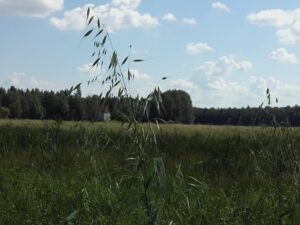Common wild oat

Common wild oat is a very fast-growing outlaw weed. A single seed can produce hundreds of seeds that remain viable in the ground for several years. The economic damage of a bad infestation is high.
If there are any common wild oats on the plot, please indicate this in the plot information when applying for aid.
You can find out the status of base plots in the register of common wild oat on the map layers of the Vipu service. Go to the map for a particular plot. In the left sidebar, select the grid level for common wild oat. You will then see the register information for all plots in different colours.
Yellow means mild contamination and red means severe contamination.
The law obliges you to combat common wild oat. If the field parcel holder or landowner fails to do so, the cuts are made by way of a conditionality. The cut will therefore apply to all forms of aid. The cuts will be imposed on the holder of the base parcel. In the worst case, all agricultural aid could be lost.
When you think a block is free of common wild oats, you can order a cleanliness check in the block data of the logging search. This means that you should order the check in good time in the spring.
The municipality audits for two consecutive years. In the year of the inspection, do not chemically control or weed the control plot. The most successful control is to grow wheat or barley on the parcel during the control years. Not all crops can be checked. The regulation mentions oats, rape seed, turnip rape, mustard, rye, caraway, potatoes, peas, field beans, hemp, maize, grass and fallow land as ineligible. The crop must also be in such a condition that any common wild oats can be detected. In other words, there are no lodging, weeds or the like.
If no common wild oat is found for two consecutive years, the block is deleted from the common wild oat register.
